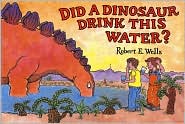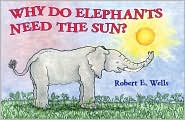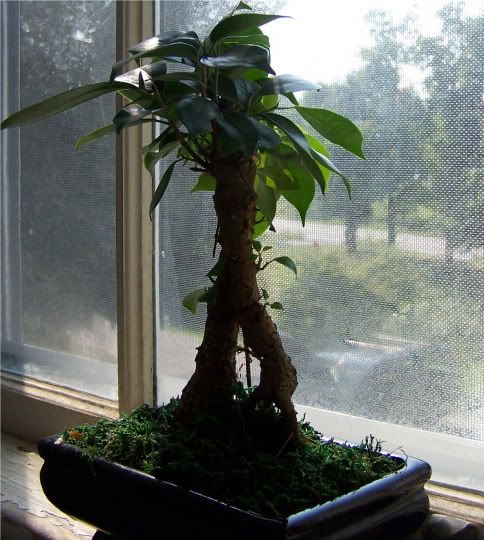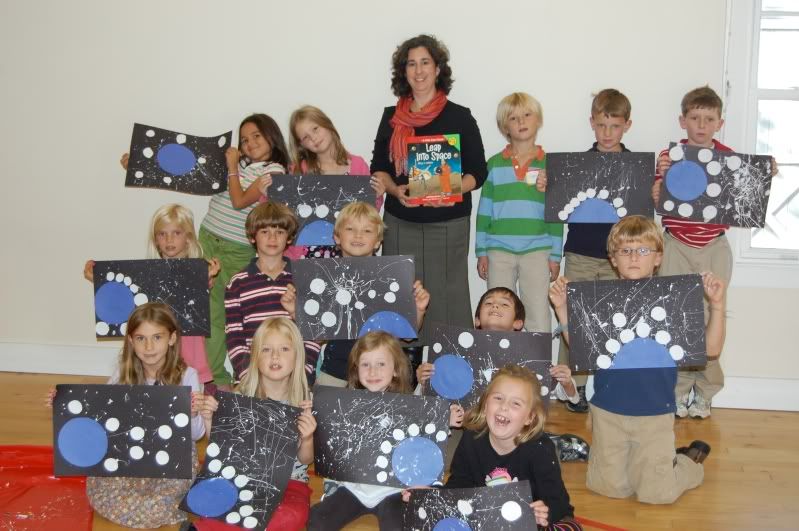2012 Nonfiction Reading Challenge.
Maybe you want to read one nonfiction picture book each week or each month.
Visit both the Kid Lit Frenzy and The Nonfiction Detectives blogs
throughout the year for nonfiction reviews and giveaways!
NASA has revealed the first photos of Mercury by the Messenger Spacecraft and they look amazing. Mercury, the closest planet to the Sun, has been seen before, but never this close. 1,500 photos have already been taken this week and more than 75, 000 are still planned over the next year. Scientists are hoping to gain a deeper understanding of how plate tectonics began on Earth from Messenger's photos of Mercury.
Follow Messenger's mission to Mercury at NASA.
It's spring and like everyone else I'm ecstatic that winter is finally over and the warm weather is more than a wish on a winter breeze. With the buds starting to become visible and the green shoots popping out of the ground I can't help but be reminded of our planet's cycles and how we are all connected. (It doesn't hurt that I'm beginning a spring session for third graders on earth science and book arts!)
Here are some nonfiction reads that help demonstrate how connected we are to our Earth, each other and the rest of the universe:


Robert E. Wells does a fantastic job presenting children with the interconnections and wonders of the natural world in his titles, Did A Dinosaur Drink This Water and Why Do Elephants Need The Sun. The illustrations are kid friendly and the text is playful and informational.
I think Older Than the Stars will become a classic. It's definitely one of my favorite new picture books. The bold illustrations by Nancy Davis marry Karen Fox's lyrical story of the big bang perfectly. Sidebars with additional information are interspersed and give readers an opportunity to take their reading to another level. It's what a nonfiction picture book should be!
According to Nat Geo, researchers in Brazil have found a great use for banana peels ....and no, it is no laughing matter! They've discovered that banana peels can be used to remove heavy metals from water and they're using them to clean up river water. Lead and copper are just two metals that enter rivers through agricultural runoff and industrial waste. The metals bond to the peels and then can be removed and properly disposed. They've also discovered that other plant parts, like coconut fibers and peanut shells can also be used to remove toxins from water.
Cool, huh?
For more
Check out this Dutch manufacturer of biodegradable sneakers. The best thing about theses sneakers is that after they wear out you can actually plant them rather than throwing them in a landfill. The sneakers are made with seeds imbedded into them so that a sapling will grow from the planted sneaker. How cool is that? Kudos to Oat Shoes!

This year's winter solstice on Tuesday will fall on the same day as a full lunar eclipse for the first time in 456 years.
The rare, 72-minute lunar eclipse — when the sun, the Earth and the moon align — will begin in the early morning hours on Dec. 21 in North America, and should cast an amber glow on snowy landscapes, said NASA.
The moon will pass through the darkest part of the Earth's shadow.
Tuesday marks the first day of winter in the northern hemisphere, and the winter solstice begins in the evening at 6:38 p.m. ET, which is 8:08 p.m. NT, 7:38 p.m. AT, 5:38 p.m. CT, 4:38 p.m. MT, and 3:38 p.m. PT.
Scientists said the last time a full lunar eclipse coincided with the winter solstice was in AD 1554. NASA forecasts that at 1:33 a.m. ET on Tuesday, "Earth's shadow will appear as a dark red bite at the edge of the lunar disk."
After roughly an hour, that "bite" will eventually grow to cover the whole moon. That stage, known as "totality," will probably start at 2:41 a.m. ET and last 72 minutes.
As for the best time to witness the cosmic event, NASA suggests being outside at 3:17a.m., "when the moon will be in deepest shadow, displaying the most fantastic shades of coppery red."
Although the arrival of the solstice cannot be seen, the moment describes the instant when the Earth's axial tilt is farthest away from the sun, resulting in the shortest day of the year as well as the longest night of the year.

Meet my new bonsai! I rescued it from Home Depot - removed all those ridiculous glued on stones and placed it in my office window. I have had bonsai trees on my mind ever since my trip in July to the botanical gardens in Montreal. They have the most amazing bonsai collection. The gardens not only inspired me to search out my own tree, but also inspired one of my lessons this summer for my class of 5-7 year olds. I introduced them to a beautiful book - WABI SABI by Mark Reibstein and illustrated by Ed Young.
Wabi sabi is a Japanese term that represents the view of seeing the beauty in ordinary things, imperfect things, like a simple tea bowl. Wabi sabi is beautiful and ordinary at the same time. In the book, Wabi Sabi is a little cat who searches for the meaning of her name. Reading this book is a wonderful way to share wabi sabi with the children in your life. I guarantee you'll love it!
Listen to the author and illustrator of Wabi Sabi share their story of the making of this terrific book.
It's a heat wave. Time to crank up the air, submerge into a mountain pond or sit in an air-conditioned movie. I've got two books for you today that seem great reads for this cantankerous weather:
The Dust Bowl: Through the Lens by Martin W. Sandler shows us this horrible natural disaster through the spectacular images that influenced our nation. If you weren't hot already, looking at these photos will put you right in the middle of those hot, drought-filled days. You'll thank the stars it is 2010 and our heat wave is a temporary blip. Sandler does an awesome job of looking at the science behind this disaster and the agricultural practices that contributed to it.
The Story of Snow: The Science of Winter's Wonder by Mark Cassino with Jon Nelson is not only wonderfully illustrated by snow crystal images, but is also expertly written. The text is sparse and purposeful. A beautiful book! And the perfect read on a hot summer day to put you in a cool frame of mind.

 Add a Comment
Add a Comment
Watch out if you are heading for a run in Central Park - I'm not talking about muggings - This year you have to worry about rabid raccoons.
I was so surprised to hear about this outbreak in the city. It's been decades since New Yorkers have had to worry about rabies. It's so important to keep your pets vaccinated and on leash.
Keep yourself safe this summer, by not feeding or touching any stray animals- dogs, cats, or raccoons. Keep your garbage secured. Stay away from any animal that appears to be acting irregular - that might mean unusually friendly or ill.
Wow, I must confess I'm a little jealous right now of author Karen Romano Young. She's on board a ship headed to the Arctic! How terrific is that? She's blogging along the voyage and I'm sure it will be filled with great photos and tales of adventure and science. Keep an eye out and enjoy the trip along with her!
The opening pages of Remembering Green hooked me. "I was born when the Earth was old. When I was born, there was a scent of rain on dust, the dust of Africa. And that is what my mother called me: Rain."
Beake's middle grade eco-fiction novel is set in the year 2200, when global warming has covered most of the Earth in seawater. 
Poetic.
Must go and finish it!
Joyce Sidman's latest, Ubiquitous, is an absolute treasure. Sidman and illustrator Beckie Prange are the creators of the Caldecot Honor Book Song of the Water Boatman & Other Pond Poems. This latest picture book, delving into nature's survivors including, the gecko, grasses, diatoms, bacteria, coyotes, and humans, does not disappoint. Sidman's poems are eloquent and are accompanied by rich, scientific notations. Prange's illustrations (linocuts, hand-colored with watercolor) are lush and inviting. Ubiquitious is certainly deserving of its multiple starred reviews!

For a great interview with Joyce check out this article in School Library Journal.
You have a few days left to vote for your favorite Get Green video! There are ten finalists. All great. All great fun to watch.
Watch them all here and tell me your favorite!
More news about the oil spill in the NY Times today. It amazes me that there wasn't a contingency plan for such a catastrophic spill. How do you work in such a risky business and not have a plan? Of course, it all comes back to conservation. Shutting off those lights when we leave a room. Buying products with less packaging. Eating foods grown and produced locally. Cutting down on our energy use is really the only way to answer our energy problems.
Using this as a teachable moment for your classroom? Check out Oil Spill! (Let's Read and Find Out Science) by Melvin Berger. 
I wrote about dams in my book River Wild and their impact on North American Rivers. They can interfere with wildlife as they do with salmon in the Pacific Northwwest. For decades dams on the Klamath River have been providing hydroelectric power and water for farm irrigation in the Klamath River basin in southern Oregon and northern California. But there's been a water war between West Coast commercial fishermen and Native American tribes who have seen the depletion of salmon populations and the farmers using the irrigation provided by the dams. Now pacts have been signed to restore the river and the salmon by removing four river dams! This is being called one of the largest river restoration projects in history! Wahoooo! Read more.
Add a Comment
At this crucial time in our world it is so unfortunate that we have scientists slanting results and moving discussions about climate change into a different arena. We all know that studies can be interpreted differently depending on who is conducting the study in the first place. We need to look at objective results that cannot be refuted. There are many long term statistics to look at that lead us to believe that our climate is changing. The majority of scientists concur.
Greenland lost 100 billion metric tons of ice between 2003 and 2005. Half of the glaciers in Spain that were present in 1980 are gone. Siberia’s permafrost has started to melt for the first time since it was formed at the end of the last ice age.
There has been a decline in the polar bear birthrate since the early 1980’s and adult polar bears are decreasing in weight.
Spring arrives between 6 and 8 days earlier on average than in the 1970s in Europe. 78% of 542 plant species have been found to flower and fruit earlier in the year. Migrating birds are found to be returning to their northern homes earlier.
And there are many more indicators. The question is not whether it is changing, the question is what is causing the change. But, regardless of what is causing the change, we know that the issues facing our environment impact everyone, especially the poor. Pope Benedict notes "the environment is God's gift to everyone, and in our use of it we have a responsibility to the poor, toward future generations and toward humanity as a whole."
Catholic Bishop Howard Hubbard states correctly, "rising sea levels, violent storms, floods, drought, encroaching deserts, diminishing supplies of glacier water and erratic weather patterns will have the greatest impacts on people living in poverty in developing countries, who are least able to adapt. "
We need real solutions. We need everyone in this world to sign on to making a difference. We all need to hold our leaders accountable and hope for success in Copenhagen.
As ARA of SCBWI Eastern NY region I plan a master class retreat each November at beautiful Silver Bay, on Lake George, NY. Last year was the first and focused on novels. This year the focus was on picturebooks and we had a group of 40 authors and editors. The weekend is set up to include one-on-one critiques with one of the five editors, group crit groups, hands-on workshops in the evenings and white space. Since the group is small it has a great atmosphere.
This year our editors were Alexandra Cooper from S&S, Ruta Rimas from Balzar and Bray, Erica Zappy from HM, Rotem Moscovich from Cartwheel/Scholastic, and Liz Waniewski from Dial. They were a terrific group - smart, insightful, and inspiring. Alexandra spoke Friday night after our wine and cheese reception (Yes, you read that right - we added that on this year) about what makes a picture book. It was a great way to open our retreat. Ruta followed with exercises on what makes a pb great. Both started off the weekend with a bang. Our juices were flowing and many folks went back to their rooms and wrote late into the night.
We worked in groups on Saturday morning without the editors. As this was a master class, the comments were insightful and helpful. After our lunch (basic food, no frills), we each met with one of the editors who had reviewed our manuscripts ahead of time. It was rainy all day, but much warmer than last year and the fire in the fireplace kept us cozy all day!
After dinner Rotem and Erica gave a presentation on picture book aesthetics and Liz gave us an exercise on the business side of things. We stayed in Watson for cookies and cocoa - too rainy for our bonfire. It was tough to believe the weekend was almost over.
We met Sunday morning in our crit groups again, but this time the editors rotated between groups for a Q&A session. This was the time to ask final questions, talk about submissions and just touch base one last time.
The sun came out to see us off and after lunch we all parted - filled up from a great writing weekend. I will admit, we were blessed with this group of editors. They made the weekend simply wonderful.
Next year the focus is back on novels. I'm already thinking of editors!
It was on this day in 1846 that the planet Neptune was discovered.
I included an activity about Neptune's 8 moons in Leap Into Space. Can you imagine so many moons in the sky? The students at Indian Mountain School did. 
There are reports all the time of companies going "green". Some of them are not really green at all, but some are very worthwhile and a great attempt to make a difference. Here's two I heard of today:
According to the NY Times, the Boston Red Sox's Fenway Park uses solar panels to heat water. Yahoo!
Frito Lay manufacturing in CT has inaugurated a co-generation system that will supply the plant with almost 100% of the electrical power they need. A terrific green move for Frito Lay! Pass the chips, please!
"The changing global climate will pose profound strategic challenges to the United States in coming decades, raising the prospect of military intervention to deal with the effects of violent storms, drought, mass migration and pandemics, military and intelligence analysts say." NY Times, August 8,2009
Well, of course!
Maria Mitchell was born in 1818. She was the first person to discover a telescopic comet! She also became the first woman elected to the Academy of Arts and Science.
You can read more about Maria in Leap Into Space.
Maria said, ' We have a hunger of the mind, which asks for knowledge of all around us, and the more we gain, the more is our desire; the more we see, the more we are capable of seeing."
If you are planning a trip this summer to Nantucket, head over to the Maria Mitchell Association at 4 Vestal Street. You can see Maria's house and gaze up into the sky just like she did.
Japan is bracing itself for a new wave of jellies that grow to 6.5 feet and over 400 pounds. National Geographic reports that this jelly deluge is like a typhoon, uncontrollable, but predictable.
Jellies are about 95% water.
Do you know what a group of jellies is called? Read the Ocean Notion on page 16 of OCEANS to find out!
Years ago I wrote about American ranchers using Compound 1080 to kill coyotes. It was heartbreaking for me. Now I seem to be listening to the whole story again, but this time it is African lions being poisoned. How can we lose these beautiful predators? Again it is a battle that pits cattle farmers against wildlife. Unlike the coyotes, African lions are a tourist draw. That in itself might help save these magnificent creatures. A fund has been set up to compensate farmers for their cattle loses so that they do not use pesticides to poison lions, however lions are struggling. The poison is still marketed and the lion population might lose the battle.
I can remember sitting in front of that old b&w family TV to watch history happen before my eyes. It brought the universe right into my house, right to ME! How exciting! Somewhere I still have that old polaroid photo of the TV that morning. Around the same time I wrote a report on the Sun for school. What an amazing time to grow up. Who knew that little girl would later write a book about the universe that would include so many more discoveries - too many to imagine?
President George Bush set us on target to go back by 2012. I hope that is still the plan! So many more discoveries to make!
Not only is it the International Year of Astronomy but it is 40 years since Neil Armstrong stepped on the moon on July 20, 1969. There are so many ways to celebrate this special anniversary. Read Moon Shot! Plan a star party. Visit a planetarium. Plant a tree. Yes, you read that right. Plant a commemorative tree.
American Forests is offering historic trees. The story of these trees dates back to 1971, when astronaut and former US Forest Service smoke jumper Stuart Roosa brought seeds from a Loblolly pine, sycamore, sweet gum, redwood, and Douglas fir on the Apollo 14 mission. The original seeds were germinated back on Earth, and these fast–growing hardwoods now thrive at the National Arboretum, the Kennedy Space Center, and at many national landmarks, university campuses, and public lands nationwide. You can plant your very own Moon Sycamore this year! What a great way to celebrate!
Add a Comment